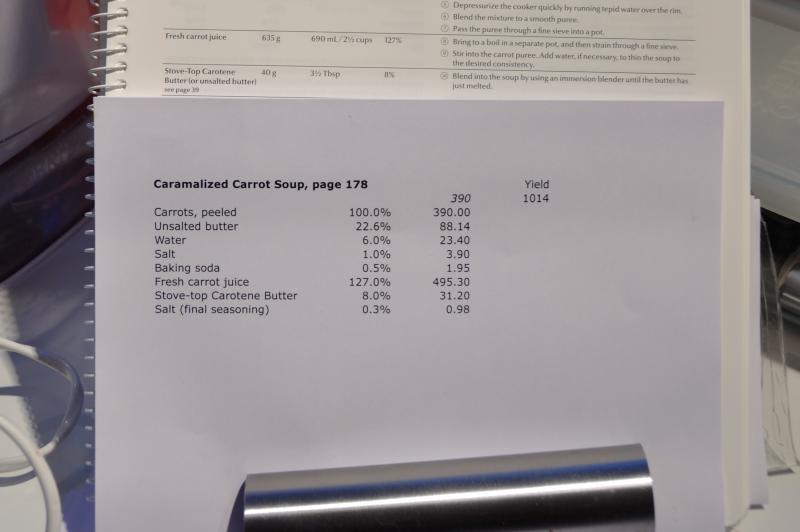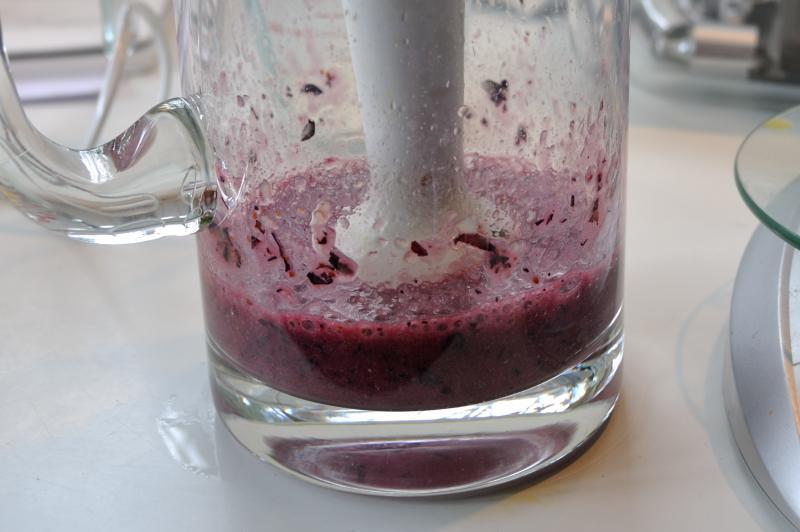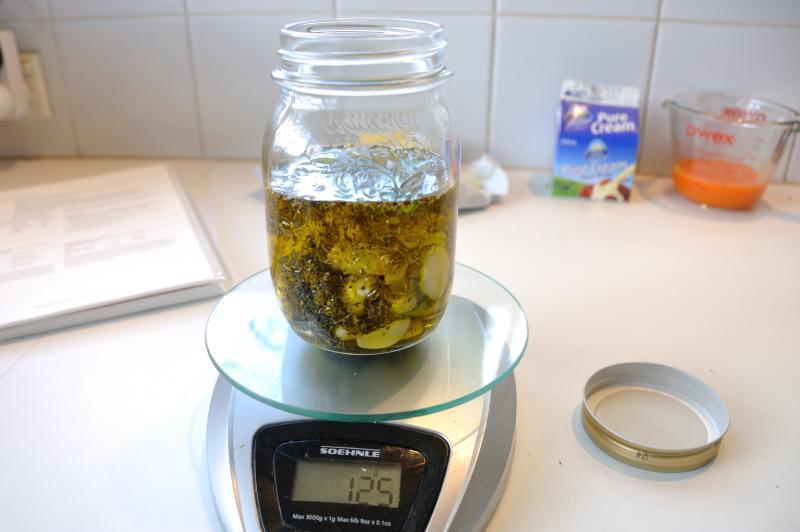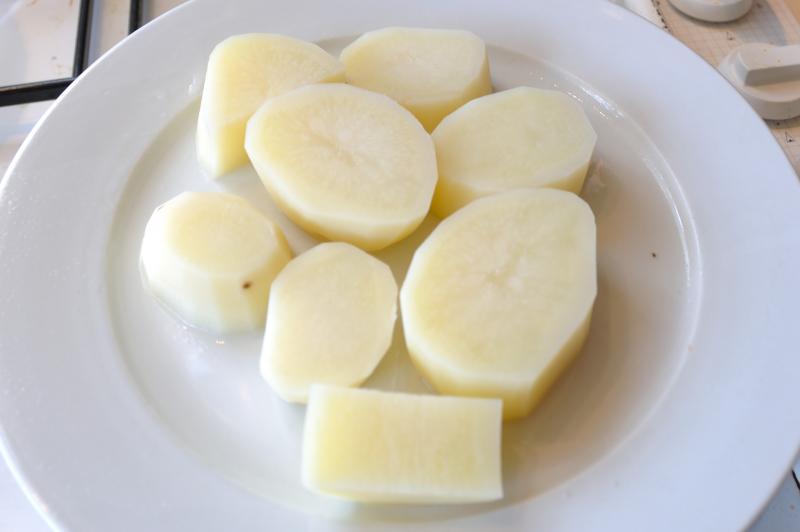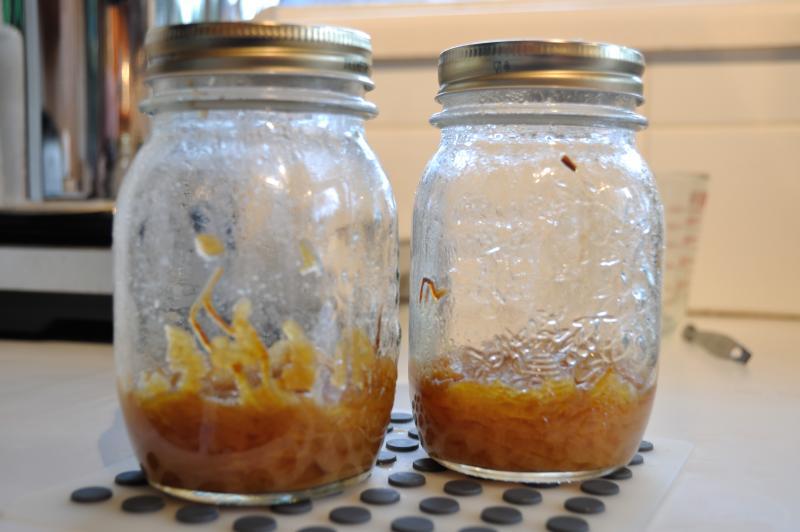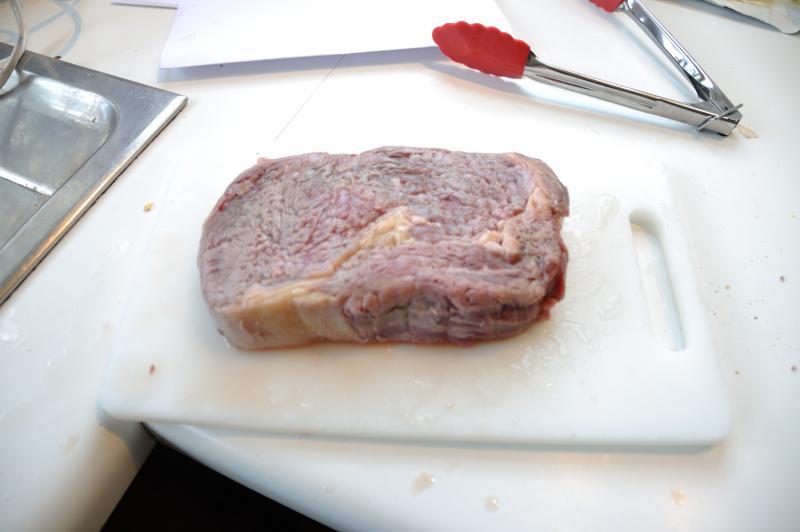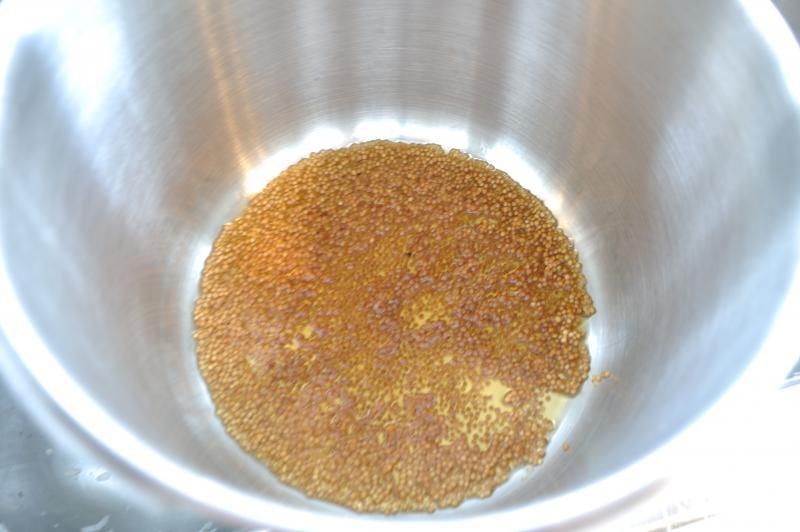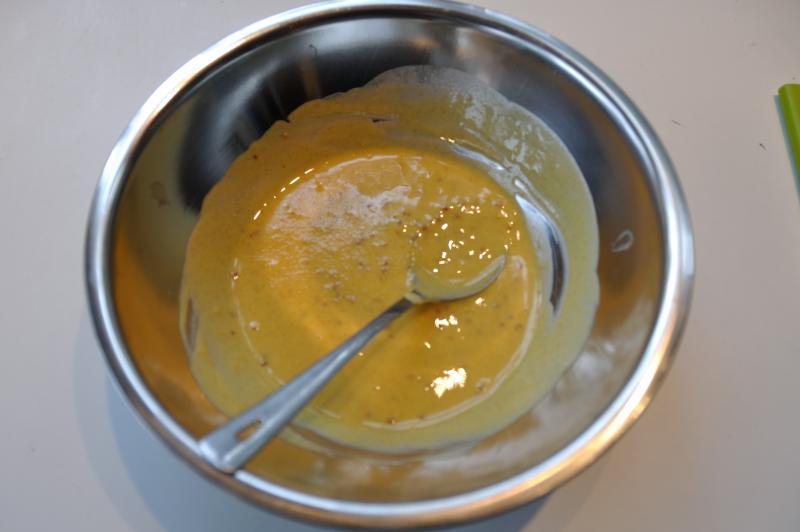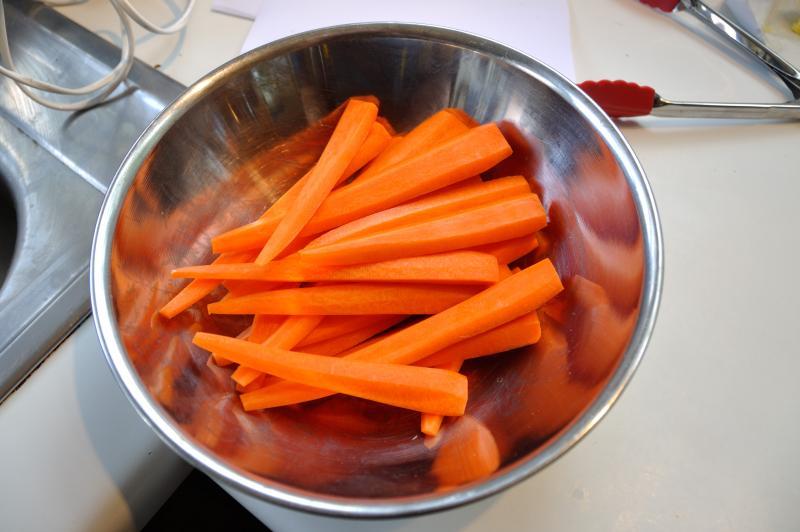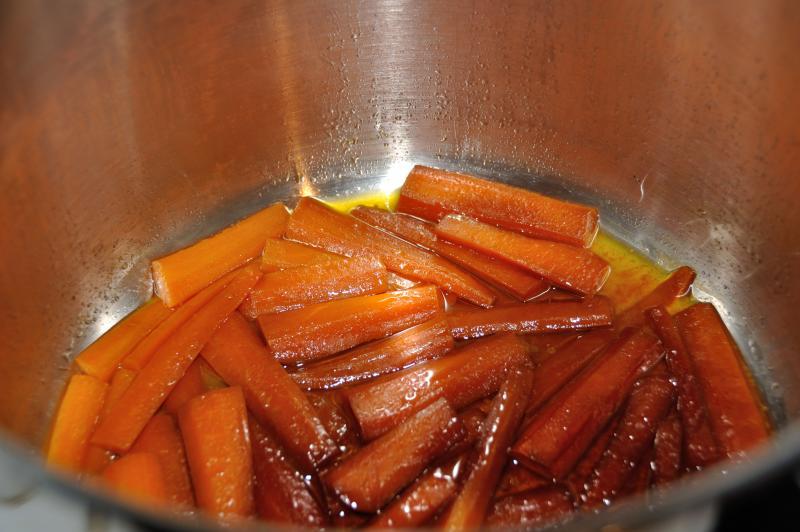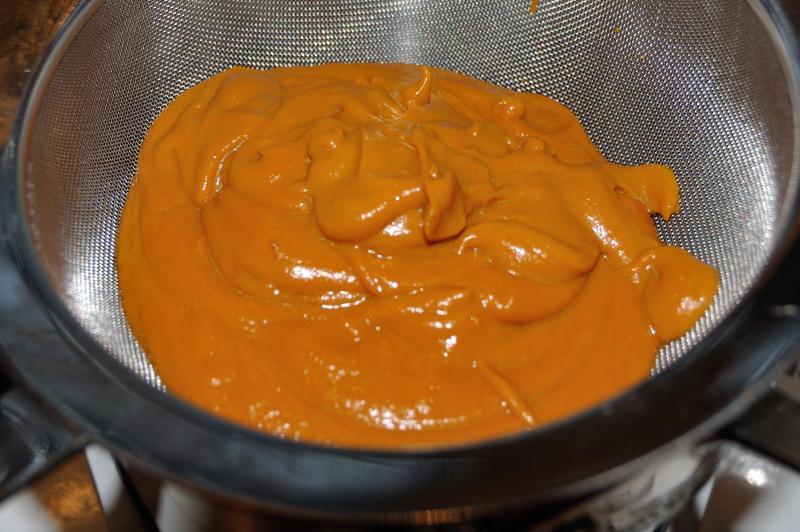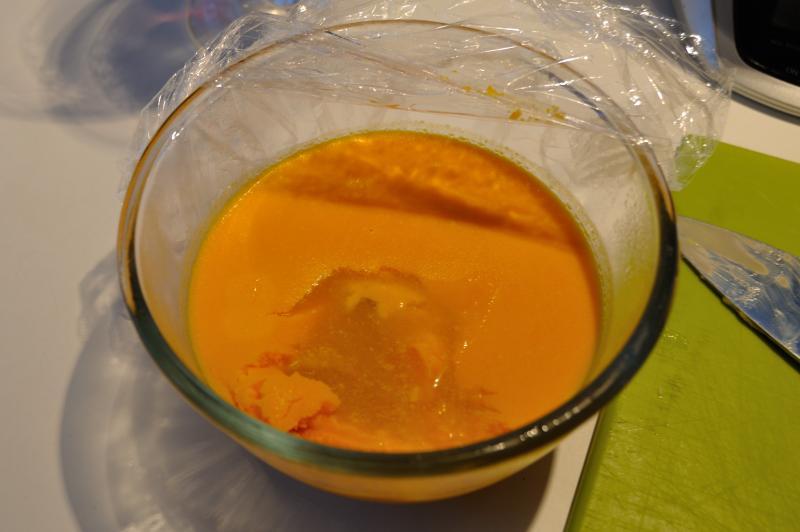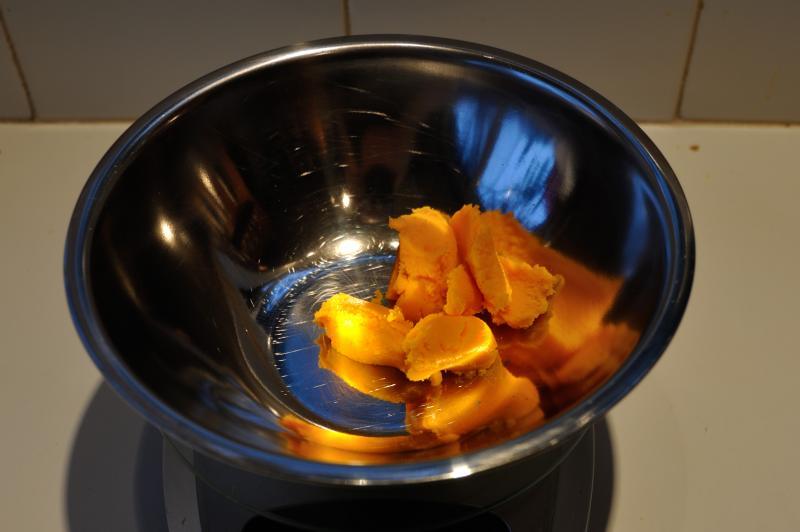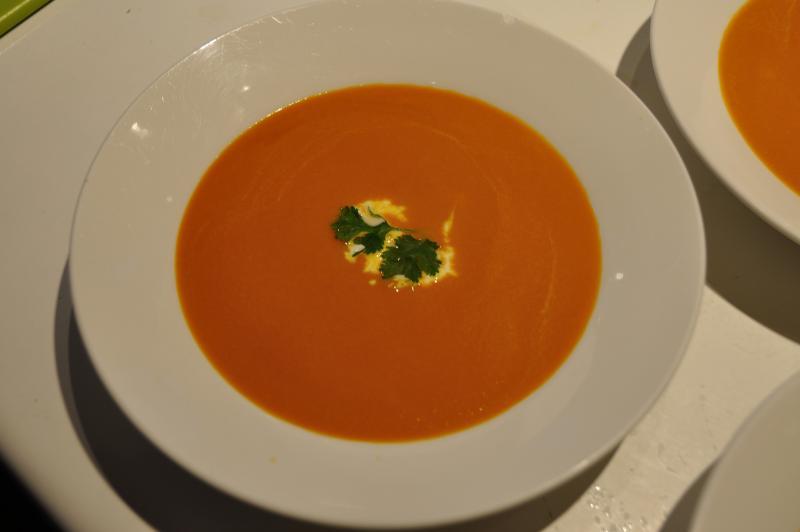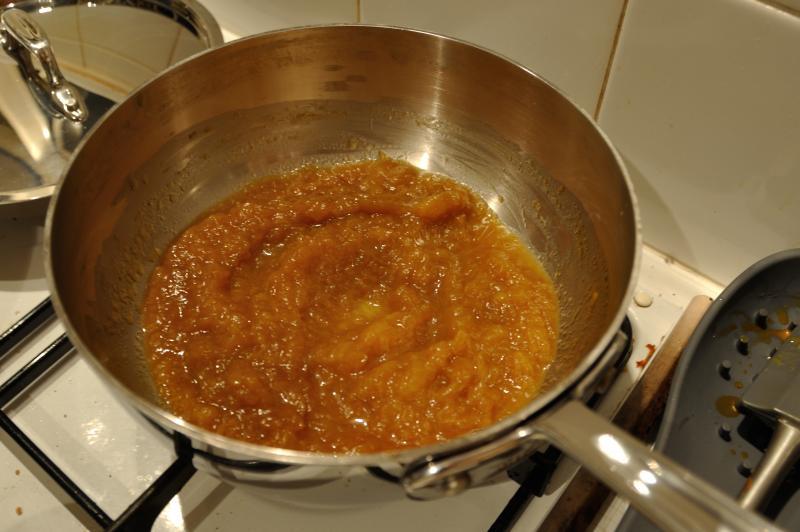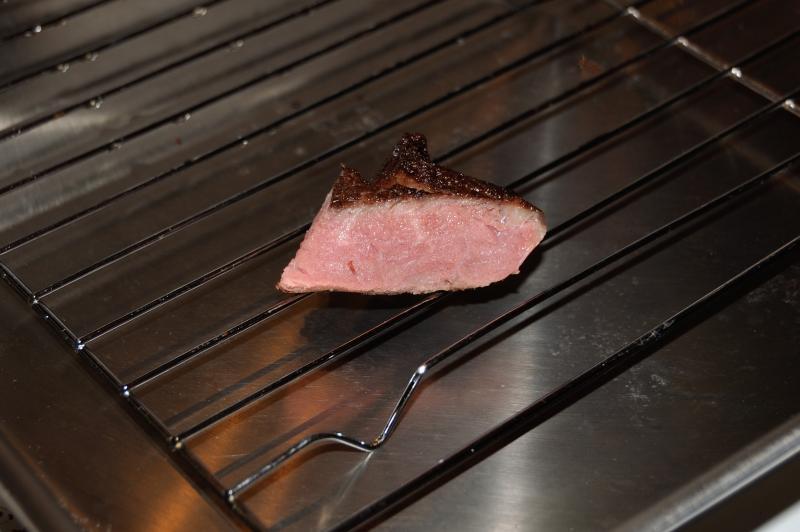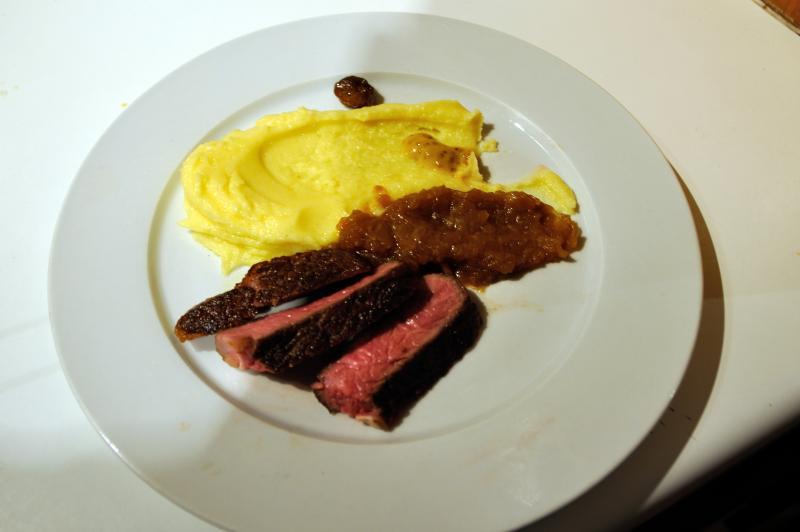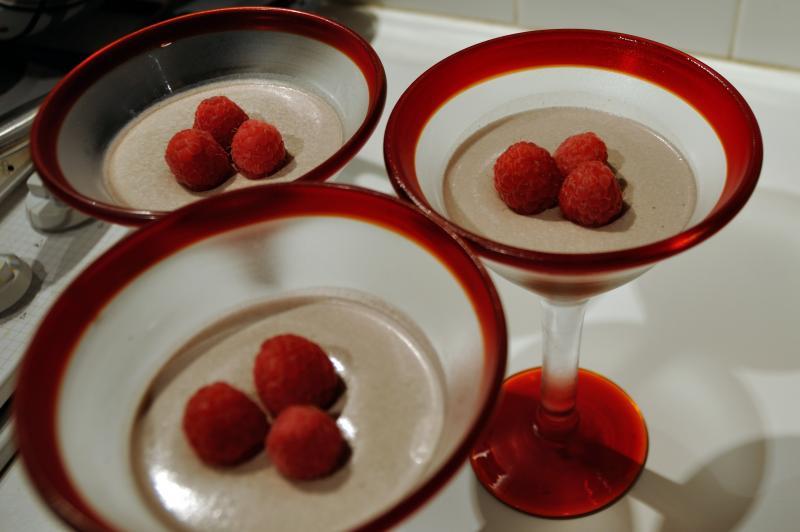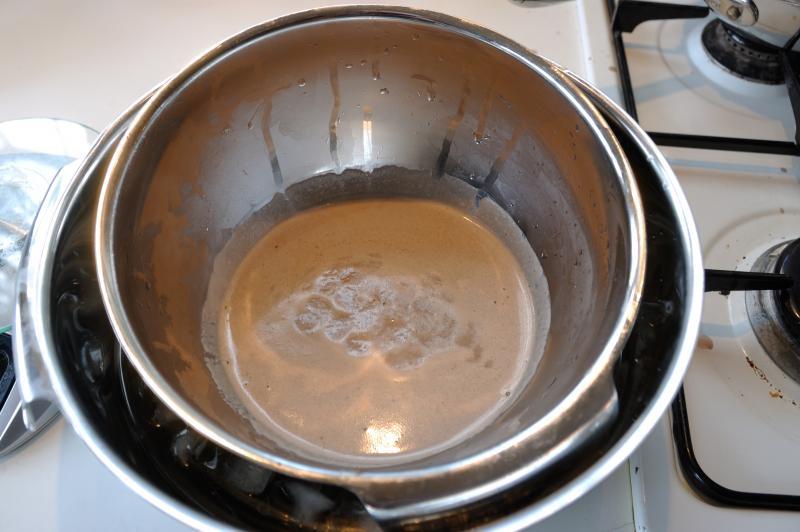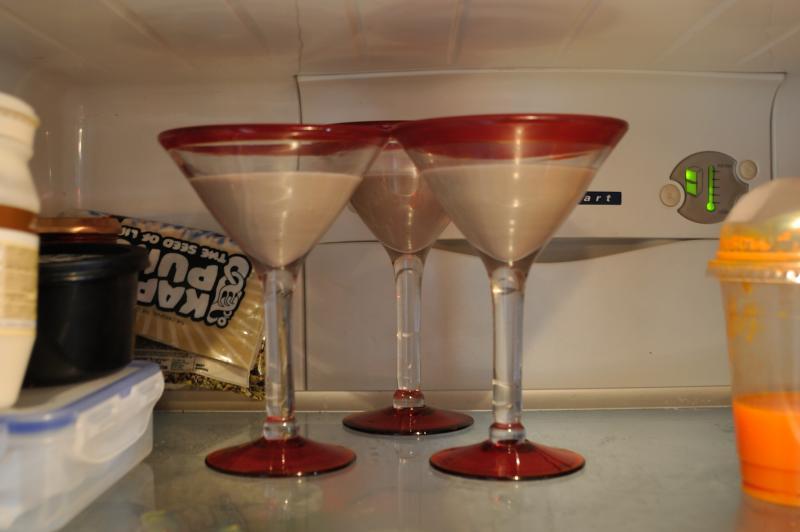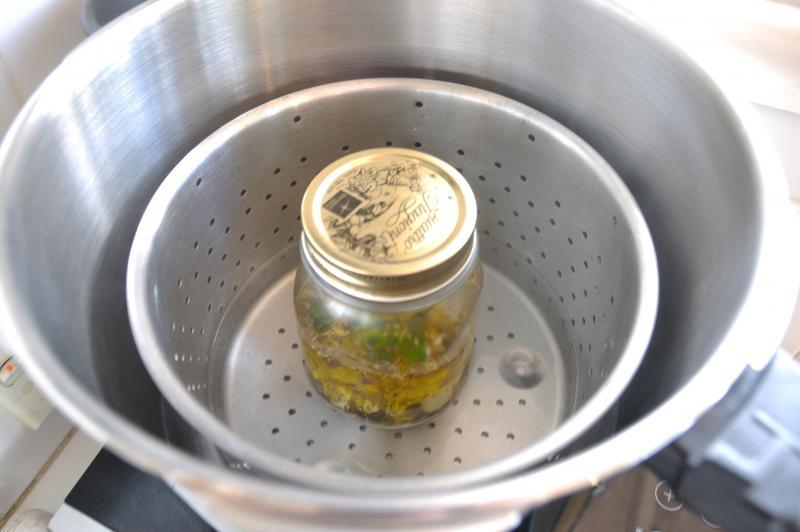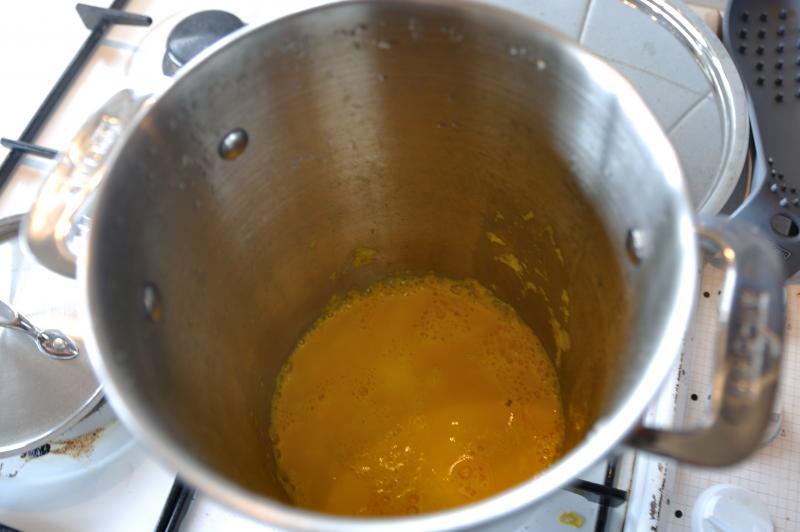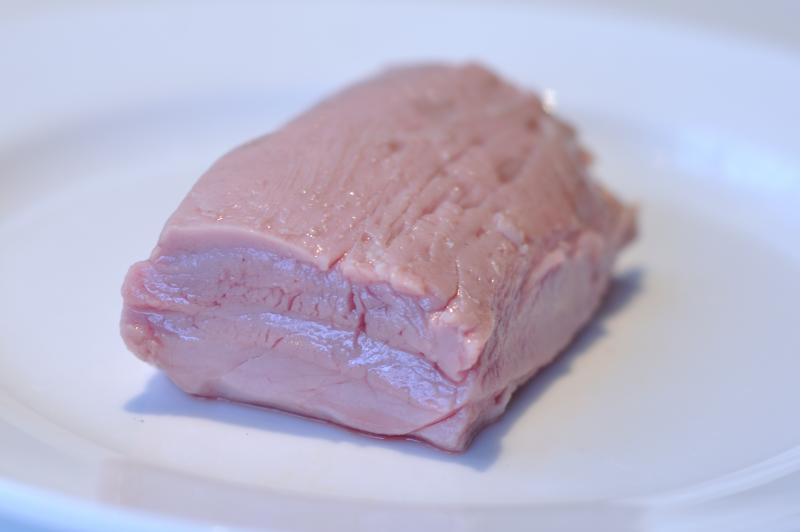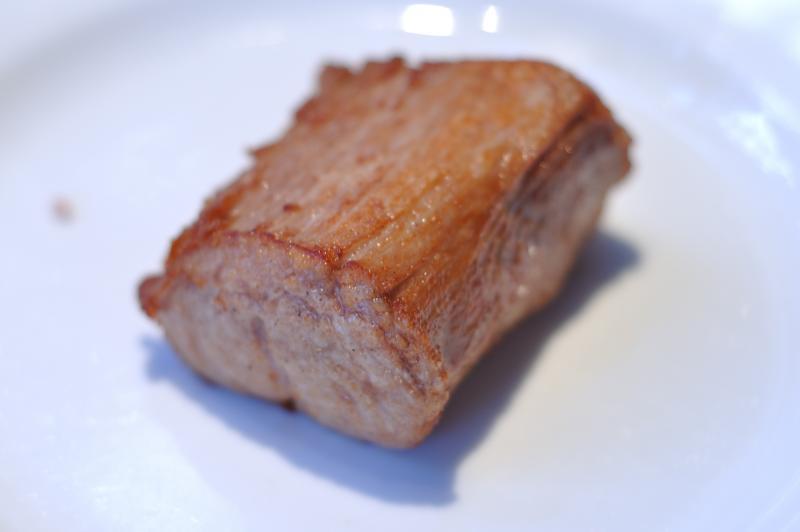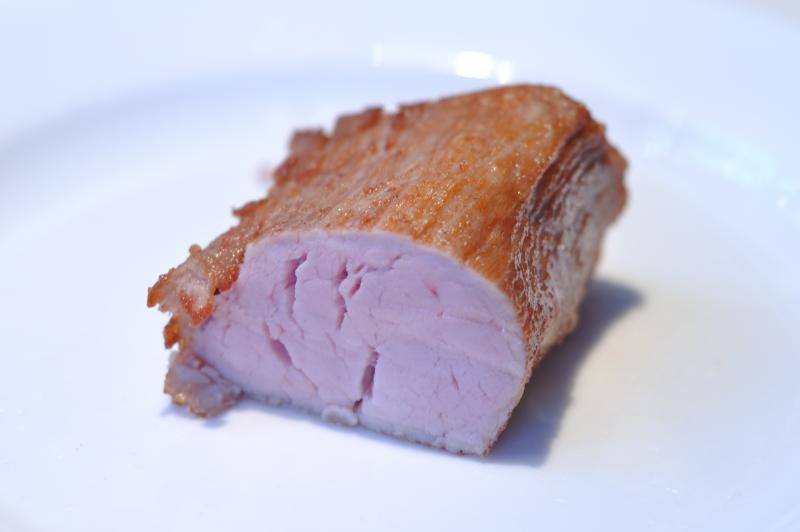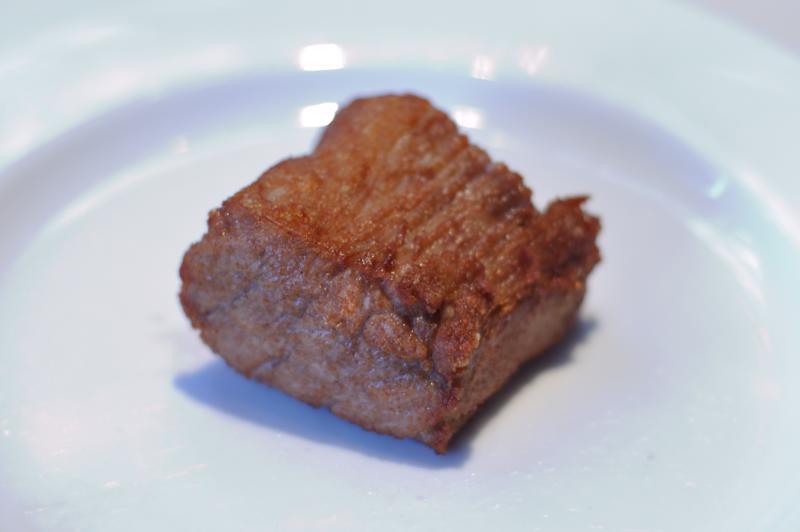-
Posts
67 -
Joined
-
Last visited
Content Type
Profiles
Forums
Store
Help Articles
Everything posted by bhsimon
-
How about using labels for SousVide bags in the freezer? My freezer is a "disaster" - I have it jam packed with frozen sousvide bagged pre-cooked items, as well the regular freezer denizens. My freezer is becoming so difficult to work with that I'm considering a making a small MS Access database program to track my inventory. I was thinking that when I cook items, I could log the info in the database, such as: Bag #, temp, time, seasonings, as well as classifications such as: Poultry, Beef, Pork, and sub-categories such as Ribs, Shoulder. I would also have the date the item was cooked. This would allow me to say something like....hmmmm...whats for dinner tonight? Pull up my program and look up my inventory to "put a meal together"....Ah...proteins....pork tenderloin...I see I also have some carrots, and some asparagus soup. Perfect! I could then also better track my time and temperature combinations to achieve the results that I like best. Also, I would then go and mark as "Used" the items that have been consumed. I tend to do "batch cooking" so that I can store items in my freezer. When entering new items into the database during a batch cooking session, I'm envisioning being able to print a label out to a small device such as a P-Touch so that I could affix that label to the bag. It would include the attributes such as date cooked, etc. that I've listed above. Does anyone recommend a device that could be attached to the computer as a printer, and then that label survive the freezer? Currently I simply use a Sharpie - but to be honest, I have terrible handwriting and tend to be a bit haphazard when I'm labeling 23 bags of Tasso ham (for example)... . I believe the database would solve that part, and being able to print out a label that is consistent across bags would seem to help. Cheers....Todd in Chicago I love your idea, Todd in Chicago. For cross-platform and mobile compatibility, I might take your idea and code in PHP and MySQL. I would be happy to share that code with you, if you'd like it. From your post, I envisaged a database structure with automatically-generated (indexed) item number, date, meat type, meat cut, temp, time, notes. Linked tables for meat type and meat cuts, so these could be entered separately and linked to multiple items. It would be easy to generate a CSS stylesheet which turned a record into a label. You could, also, just label the pouch with the item number and look up the database for more information if you are in a hurry. I'm about to test the Brother PT-2730 using laminated labels to see how it works in my kitchen, specifically for sous vide pouches in the freezer.
-

Diastatic Malt Powder in Australia
bhsimon replied to a topic in Australia & New Zealand: Cooking & Baking
Just checked and they won't ship that product to Australia, sadly. I have the same problem as the OP. The search continues. -
Around Christmas 2011, my cooking buddy purchased this beautiful truffle. The one, and only, truffle we've ever had. It weighed 52 grams. Of course, we wanted to get the best out of it. We sealed the truffle in an air-tight container with a dozen eggs. Three days later we made pasta with some of the eggs. The flavour was subtle, but discernible. We also used a little of the truffle directly, shaved into the cream in the sauce and, naturally, the truffle flavour was far more potent than the pasta on its own. A few days later we used the rest of the eggs, scrambled, for breakfast. Oh boy, everybody could smell and taste the truffle and it was awesome. None of the truffle was actually consumed, but the smell and flavour had definitely permeated the eggs. Perhaps this trick is common knowledge, but for us it was a first; and really exciting. I can't see why the same technique wouldn't work for other ingredients. We didn't vacuum our container. Perhaps, with other ingredients, it is about the volume you use and the way it is prepared. For instance, would garlic be more effective if you crushed or grated it? Our eggs were sealed with the truffle for seven days when we used them for scrambled eggs, so I guess time is also a factor. I'm really interested in the results of your experiment.
-
Sydney, sadly. I have been to the Prahran Markets in the past, though, and they are great. Thank you for the suggestion.
-
Thank you! So nice when someone notices things like that.
-
I didn’t think so. I immediately wrapped the meat in paper towel after frying and this removed all the excess oil. This was one of my concerns, too, before I first attempted the process. In fact, it was the reason I hadn’t tried before now. Modernist Cuisine at Home mentions the method and finally gave me the confidence to give it a try. I’m glad I did.
-
I’m not sure. I did move the meat around briefly at the start of the process because I was worried about the meat sticking. When I do this again, I will do a small experiment. Usually when I cook, it is for my wife and I; so I'll put one piece in for 30 seconds, untouched, and another piece for the same time but keep the meat moving around in the oil.
-
For my wife and best friend, I attempted my first round of recipes from Modernist Cuisine at Home. Caramalized Carrot Soup, page 178 (including Stove-Top Carotene Butter, page 121) Potato Puree (pommes forestières variation), page 230 Pressure-Caramalized Onions, page 127 Pressure-Cooked Garlic Confit, page 126 Honey Mustard Sauce, page 259 (uses Pressure-Cooked Pickled Mustard Seeds, page 125) Sous Vide Steak after Barbeque Marinade, page 134 Blueberry Panna Cotta, page 366 Firstly, I'd like to thank Chris Hennes and pbear for their advice regarding canning jars. As pbear guessed, I picked up some Quattro Stagioni jars which are not the same as Mason jars; they have a one-piece lid. They worked perfectly. Thankyou Chris and pbear. Before I get into it, I thought it might be worth mentioning that I had to scale each of the recipes because the yield was generally too much for the three of us. I was determined not to make too much food, which happens all too often when I cook. The scaling percentages were great. I used a spreadsheet program to type up the ingredients for each recipe and apply the scaling. I started the day preparing the panna cotta. My wife loves blueberries, so I gave her the choice of raspberry, blueberry or a combination. She chose blueberries, of course, which I enthusiasticly embraced. I didn't use powdered gelatin because I already had gold and platinum gelatin sheets in my store cupboard. I measured out the required amount, using 50% of that from each sheet. I love the colour of the blended blueberries. I used an ice bath to cool the mixture quickly. I wanted to get it into the fridge as quickly as possible to give it plenty of time to set. Next I prepped the garlic confit and got it into the pressure cooker. The end result is gorgeous. The flavour is so pure and intense! We are lucky to have a juice bar very close to our house, although too poor to afford a decent masticating juicer of our own. My wife generously offered to go to the juice bar for some freshly extracted carrot juice which was immediately combined with beautiful Danish butter, blended and simmered to infuse. While the garlic confit was in the pressure cooker, I started on the potatoes. This is what they looked like after their 35 minutes in the circulator. Some dried chanterelles being infused into the cream. Now that the pressure cooker was free again after the garlic confit, it was time to get the caramalized onions started. They came out of the cooker looking beautiful and golden. This is what the steaks looked like in their marinade, just before being drained and put into the circulator. Out of the circulator. Before going to the marinade, I used my 48-blade Jaccard on them. You can see some of the blade marks in this photo. Since the onions were finished in the pressure cooker, I got the mustard seeds going. Once done, I prepared the honey mustard sauce. The flavour was very clean and very intense. Most components were ready, so it was time to get the soup going. I enjoyed the process of preparing the carrots. After their time in the pressure cooker, this is how they looked. So cool. After blending and just before being passed through my fine strainer. Again my wife offered to get some carrot juice from the juice bar. We deliberately got different batches of juice because we wanted to use the juice as fresh as possible. Time to blend in the carotene butter. The finished soup! After the soup starter, it was time to get the mains plated up. I reduced the liquid from the caramalized onions while deep-frying the steak and blending the butter into the potato puree. This is a cross section of the deep-fried steak. The crust was actually very dark golden after a minute in the fryer. Next time I will halve the time to 30 seconds. The finished dish! My plating skills need a lot of work. Desert was easy. Finished the panna cotta with fresh raspberries. My wife and best friend were incredibly complimentary about the whole meal. I'm overly critical of anything I cook, but Modernist Cuisine at Home is such a great book that I was really pleased with the results. The carrot soup is superb, as many have noted. Very buttery but a beautiful, clean carrot flavour. It was so amazingly rich that we all agreed it could have been served in a shot glass as an amuse bouche. If I was to make it again as a soup starter, I would probably drain the butter from the pressure-cooked carrots, rather than include it, to reduce the richness. I didn't think the combination of flavours in the mains was exactly right, but each component was perfect in itself. We started to combine the meat and potatoes with different components and enjoyed a range of flavour combinations. The potato and garlic confit was lovely together, as was steak and onion. Steak and honey mustard sauce was also good together. The potato puree was simply amazing on its own. I couldn't find Yukon Gold here in Australia, so we substituted for Desiree; I think this was a poor substitute. Although the result was still very tasty, the texture was more fluffy than silky. There is no doubt that the 35 minute dunk in the water bath had a positive impact on the outcome. This was the first time I had deep-fried my sous vide meat to get the Maillard crust. It was definitely a great technique. A lovely crust was formed with almost imperceptible effect on the doneness of the interior. The only failure for the evening was the panna cotta. The failure was in the texture, not flavour, and not caused by Modernist Cuisine at Home. I think I made a mistake measuring the gelatine. Even though they had been in the fridge (at 4°C) for more than 8 hours, they didn’t set. It was more like a very thick cream. In the discussion of gelatine in Modernist Cuisine at Home, I learned that bronze, gold and platinum gelatine sheets have a range of bloom strengths. The suggest powdered gelatine had a single bloom value of 225, and silver gelatine sheets have a single value of 160 bloom. I think my mistake was compounded by this non-specific bloom strength. In future I will purchase only silver sheet gelatine or other gelatine sheets with a specific 160 bloom strength (Modernist Pantry sells these). I really enjoyed my first cooking experience with Modernist Cuisine at Home. It was a fantastic day of kitchen joy. Although I also have Modernist Cuisine, I haven’t cooked from it. I have, however, learned a lot from those five volumes and I use that knowledge all the time in my cooking. The recipes in Modernist Cuisine at Home are very accessible; with a pressure cooker and immersion circulator, basically every recipe is within reach. I’m already planning my next menu. Finally, a big ‘thank you’ to all of those who contribute to the eGullet community. I read eGullet every day, and have done so for years since the beginning of the sous vide thread. I finally joined so I could express my gratitute to the community that has given me so much knowledge and inspiration.
-
As promised, I tried the deep-fry method on pork loin filet. Sous vide at 56°C/133°F. Here's what it looked like just out of the bath. I love sous vide pork loin filet. It is so beautiful, pink and juicy. After thoroughly drying the outside of the pork using paper towel, it was ready for a dunk in the fryer. I heated the peanut oil to 205°C/400°C. I wanted to have the meat in the oil for the shortest time possible to avoid over-cooking any of the meat. When I did scotch filet beef recently, I had them in there for 60 seconds, and it was more than required. So I thought I'd start with 20 seconds. Here is the colour after 20 seconds. The inside. Only a tiny ring of over-done meat. The colour was a little light. My partner even commented that it could have been done for longer. I had a suspicion that 30 seconds would be a good time, but I wanted to test that guestimate by trying 40 seconds. The colour was much improved and quite golden. The inside appears to have a slight doneness gradient, but still very good. My feeling is that 30 seconds would be perfect using 205°C/400°F oil. The colour and crust would be sufficient without adversely effecting the doneness of the inside.
-
I’m finding it very difficult to find Yukon Gold potatoes in Australia. Does anyone know of a substitute available in Australia?
-
1. Vitamix 2. Juicer 3. Henkelman Lynx 32 Not asking for much, am I.
-
I’ve become interested in the Henkelman Lynx 32 since this thread alerted me to its existence. I really like the printer and the option for H2O sensor. It would be great to be able to let the machine stop automatically when boiling is detected and print a sticker for my stock portions. I'm also interested in how the USB interface works and what data can be gathered from it. I live in Sydney, Australia so I've written to sousvideaustralia.com who distribute other Henkelman products to see if they will be available here. I will post on any pertinent details.
-
Just last night, for the first time, I tried the deep fry method of browning my meat. It worked really well. Normally, in a smoking hot pan, it might take a minute per side to get the kind of colour I like, but in 200°C oil, it took only 30 seconds and it was done on all sides. I diligently patted the oil from the meat after frying and it was not oily at all when served. When I cut the meat for service, there was a distinct crust and just a very small—like 1 mm, or less in places—ring of well done meat and the rest was perfectly done in that way only sous vide can offer. I'd been tentative about trying this method for a while, but I'm glad I did. It works really well. It was beef, not pork, but in the next week I'll be in the same position of serving pork loin to my wife and mother-in-law; I'll give this method a try and report back as to whether it works for this cut.
-
I'm about to embark on my first set of recipes from Modernist Cuisine at Home. ‘Pressure-Cooked Garlic Confit’ and ‘Pressure-Caramalized Onions’ are among those recipes. My question relates to canning jars. On page 33 there is a discussion on ‘Pressure Cooking in Canning Jars’ and mentions mason jars specifically. Unfortunately I did not remember this as I purchased canning jars from the local kitchen supply store. I did not realise at the time that the ones I purchased were not mason jars; they do not have the separate sealing lid which fits inside the screw-top lid. The lid is all one piece. Can these be used as canning jars for pressure cooking?


